(Kazakh and Uzbek National Consciousness)
Hamid Ismailov
There is an Uzbek anecdote about the Kazakhs. An Uzbek came as a guest to the house of his fellow Turk, a Kazakh. Before his departure, as a memento of his visit, he planted a tree in front of his friend’s nomad tent. The next day, when the Kazakh came out of his tent he felt uneasy. “Oh!” he thought. “This tree obscures the view of the steppe,” and he immediately cut down the tree.
This anecdote is more than a symbol; it is a reality. If you travel by train to Tashkent, passing through the Kazakh steppes, you will see that the real frontier between Uzbekistan and Kazakhstan is marked by the transition from burnt steppe to flowering oasis. But I do not intend to imply that Uzbek culture is a higher of better culture than Kazakh culture, or vice versa. They are simply different.
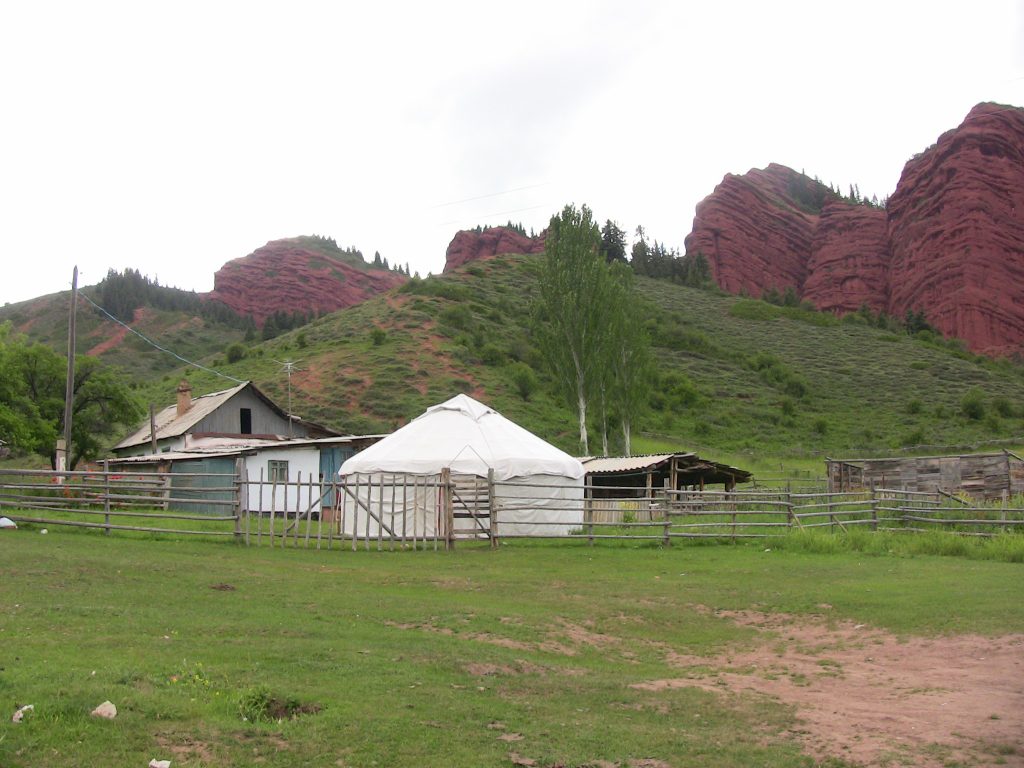
Let me tell you another story. One day I proposed to the well-known kazakh singer (“jirau”) Almas Almatov that he sing one of the ghazals of Akhmad Yasavi (an ancient poet of the 12th century considered a Kazakh poet by the Kazakhs), with the Radif (repeated word) “Utaro”. We tried to make a Kazakh version of this poem (written in ancient Uzbek) and Almas tried to put it to music, but without success. “Why can’t you do it?” I asked him. “You’ve told me that you sing the “Shahname” of Firdausi in Kazakh.” “I don’t know,” he replied. However, we than counted the number of syllables in his lines; there were 11, the same number as the Mutaqorib metre of the “Shahname”, while the number of syllables in the lines of Yasavi’s ghazal was 15. This was the cause of his failure. It was also the basis for my following thoughts and ideas.
1.
Kazakhs and Uzbeks are peoples of the same Turkic ethnic group, but as you have seen above, their cultures, traditions, modes of life and world outlooks are rather different. In order to understand more fully the grounds of this difference, let us begin by comparing two poems on the same subject: a snow fall.
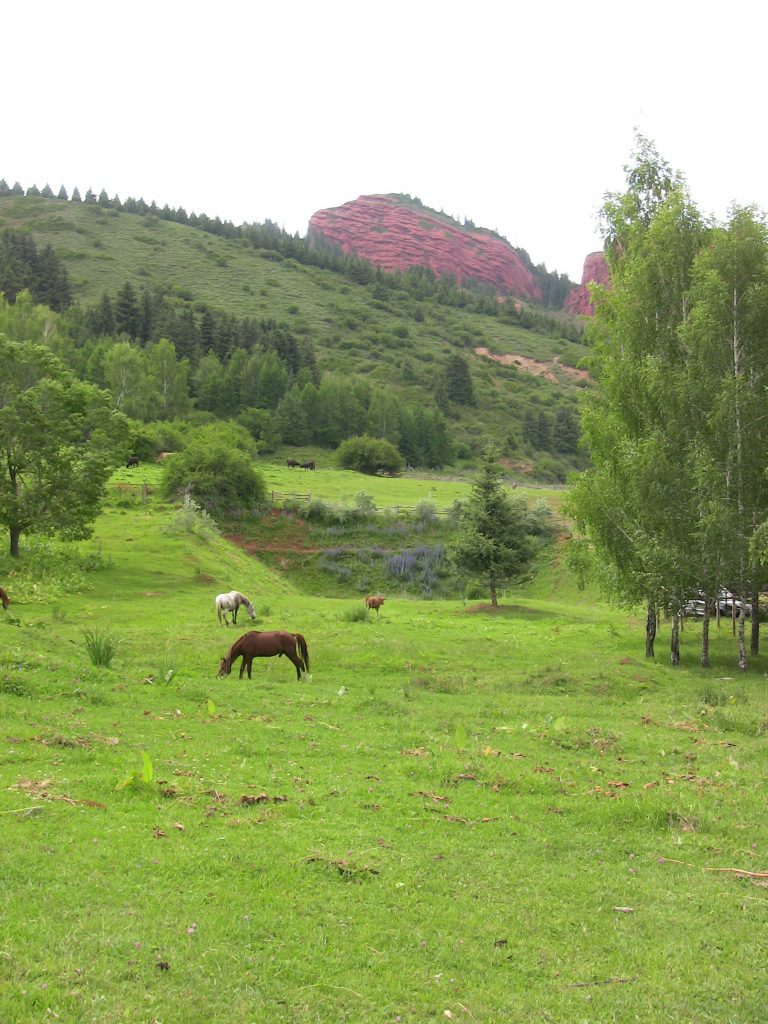
THE POEMS
A winter poured a silver profit, white as camphor on night’s musk
The winter made mysterious the white and black for its own pleasure
Although there is no snow in India, winter
Unrolled its “sari”, as irresolute as an Indian
Although a black people is obscure, with snow
The winter made from the black of night the people of purity and light
There is a tradition of drinking wine at home in winter
Let the Just (God) make white the face of winter, the source of the tradition
It warms a feast with a fire and the people of the feast with wine
It is a mistake to know winter by its coldness
They say that winter is the cause of the wind; if someone of cold character
Is hypocritical and dies of cold, winter is beyond guilt
It is difficult for those whose houses are ruined, but know O keeper of wine
If your hut has wine, winter is the architect of the cause
If you want the royalty of Jam, taste without fail a cup of sadness
When winter relieves your intoxication the morning after yesterday’s wine
O Navoi, they say that steam and warm clouds are the hell
Caused by winter’s separation from snow, ice and coldness
(Alishir Navoi, 1441-1501)
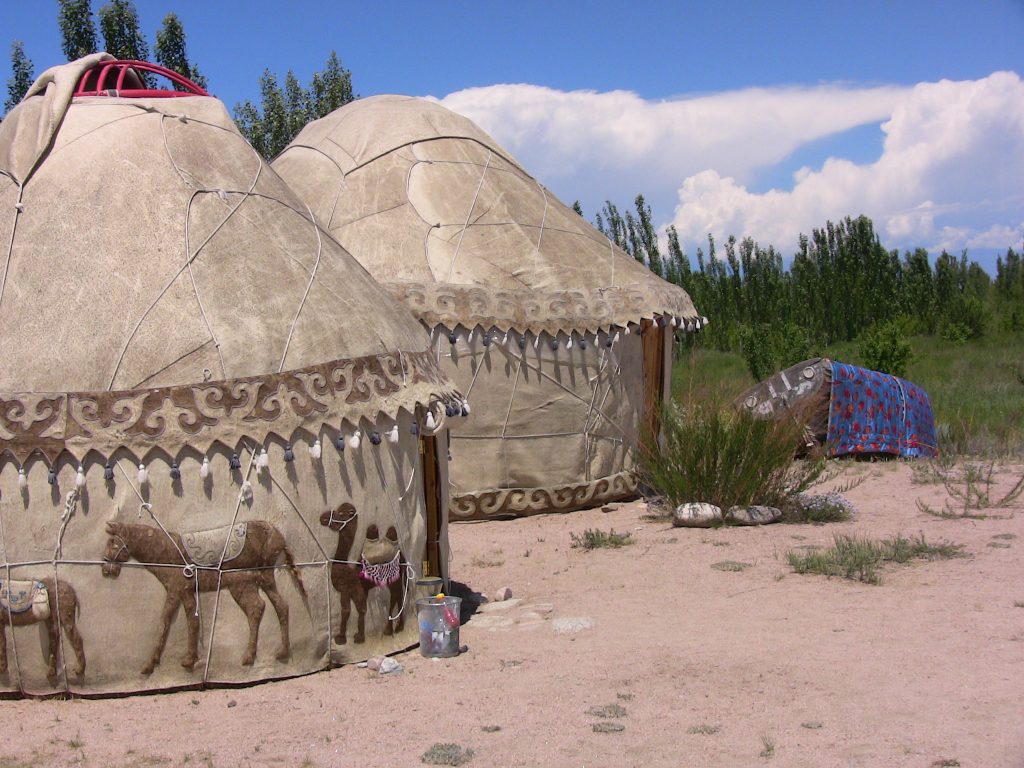
When it’s snowing here and there
Will a snowstorm penetrate through a wide thing?
In the snowstorm which beats all around
Will someone who wraps himself die of cold?
When, on a widow tent without a little upper window
You tie a flag, will it stay?
If a horse falls under the flag
Will the coward who didn’t run be right?
If because of family troubles
Wife and children
A man leaves without turning back
Say you that the things he took
Be called “talak” (renounced)?
A high, high mountain
Splash water from the high mountain
Then will your melody sound below from a valley?
If a falcon or a vulture scatters his feathers
Saying that they are the bones of relatives lost in a field
Will a crow come to you?
(Makhambet, 1804-1846)
One is a “Jir” (song) by Makhambet, an outstanding Kazakh poet-singer (“Jirau”) of the 19th century; the poem is, therefore, oral. The other is a ghazal by Alishir Navoi. There is no reason to comment on his name; it is sufficient to say that this poem is written and, therefore, apriori we can say that together the two poems contain all the specific features of the oral and written forms of poetry. One is for listening to, one is for reading; one of them is simple in form, the other is intentionally complicated. Let us look at these poems in more detail.
2.
Navoi’s Ghazal
The poem by Navoi is an exceptional example; traditionally a ghazal is about love for a woman and has a strict formal structure. It revolves around two poles – the Lover and the Beloved – and the separation between them. When one takes into account the fact that in the Turkic languages, as in the Iranic languages, there is no signification of gender, one may better understand why in these languages the ghazal became the most universal genre of poetry. Love and separation in the relationship between a man and a woman symbolise the relationship between man and God. At first sight this ghazal by Navoi appears to be far from this theme, depicting as it does as landscape, but when analysed bayt (couplet) by bayt its deeper significance becomes apparent.
When Navoi expresses the obscurity of night with the metaphor “the musk of night”, it is sufficient to remember that musk is a feature of the Beloved and one may then surmise that the night is here a metaphor for the Beloved’s hair. The same line contains the image of the “camphor” of the silver snow. The contrast between the night and the snow is a metaphor for that between the black hair and the white face of the Beloved. At a deeper level, in “tasavvuf” or Sufism the face symbolises the Absolute and the hair symbolises the transitory world. The second line of the couplet can be interpreted on several levels: as a description of a landscape – pleasure is derived from the image of the snow in the night sky; as a love poem – pleasure is derived from the image of the woman, her black hair dishevelled on her white face; lastly as a mystical poem – fascination is felt for the appearance of Absolute Beauty in this phenomenal world.
A very beautiful bayt which develops the metaphor. Winter is indirectly compared to the Beloved, unrolling its sari (the snow) like an Indian woman – irresolute, weak and pure.
The purity of the virgin winter makes even the black people of the night a people of purity and light. The landscape is still linked with the spiritual world.
When the light of purity lights up a house the tradition is to drink wine there, to get drunk on the wine of the Beloved. If winter weather is the source of this tradition this may be why the Just (God) made its face white. This bayt contains the art of “Iylkham” and it can be understood that God made the face of winter white so that when man observes the purity of winter he may realise in this the High Purity too.
Winter is as cold as the Beloved sentencing the Lover to the pain of separation, but neither is bad. Their coldness is a consequence of their virgin purity, and the Lover warmed by the wine of the feast can see past the superficial coldness.
Naturally, it is good to drink wine in winter, but this is not the full meaning of this bayt. Navoi says that if the hypocrite dies from cold because he refuses to drink wine it is not the fault of winter. The poet here contrasts the hypocrite of cold character who dies from the superficial coldness of winter with the Lover drink from wine (the beauty of the Beloved) because the Lover has to be drowned in wine in order to melt the coldness of the Beloved. Without the pure coldness of the Beloved there is no reason to drink the wine. The hypocrite dies not from the cold of winter but from the coldness of his own character.

Navoi’s concern with the poor, the homeless and the proletariat (an aspect of great importance to the scholars of the former USSR) are evident in this bayt. However, the essence of its meaning is at a deeper level, hence the words “the architect of the cause”.
If you search for the royalty of Jam (the legendary King Jamshid) or of the universe, taste first the wine of love. The obscurity of meaning disappears. What a pleasure it is to be drowned in the pure light of a winter morning. The wine of yesterday was one kind of wine but the wine of morning is another kind, adding light to light and liberating you from all kinds of obscurity.
The last bayt of Navoi’s poem is a masterpiece of “san’at-i hall” or “the art of solution”. Here he unties all knots of the ghazal, tying in their place a bigger one, so we must examine this bayt in more detail. For those who read this poem as a description of a landscape the snow and ice melt creating warm clouds and steam enabling them to see hell in a winter day.
For those who search for a deeper meaning Navoi provides more food for thought. When the pure intoxication of the winter morning dispels in clouds of steam in the afternoon the drunken Lover, too, suffers as in hell, due to his separation from the Beloved, just like the image of hell conjured up by the separation of winter from the cause of its coldness, the snow and the ice. If there is no separation like that of the pure, intangible coldness between the Lover and the Beloved, then the distance between them is a hell. But the cause of this hell is that separation between them, just as the separation of winter from its coldness produced a hell. The meanings fuse into one another and create endless new subtleties. In short, we can say that the Beloved and the fact of separation are united. Separation from the Beloved is suffering, but the liberation of the Beloved from separation is hell.
In the words of another well-known bayt by Navoi:
Navoi, don’t say much about the issue
The absence of the issue is an issue for your sadness.
(Note: The Radif in this ghazal is “qish” (winter) which contains the same letters as “ishq” (love) and “oshiq” (lover).)
3.
Let us turn now to the poem by Makhambet. As we have said, this poem is oral, and its distinguishing features are its simplicity and its rich alliteration. As with Navoi’s ghazal, we will examine this poem strophe by strophe.
This is clear, with no problems of syntax, figures or vocabulary. But why does the poem begin with a question? What is the meaning of “wide”? What is it that is wide? As you can see, these questions attract our attention. This is Makhambet’s intention; we must listen further. In any case, we are fascinated by his use of alliteration.
He develops the theme of snow. Instead of the snow being conditional, it is all around and the emphasis is on movement; the audience’s attention is turned from the outside to the inside. The snowstorm beats outside, the wrapping covers someone, a person who will or will not die from cold. Who is he?
At first the third question appears to be removed from the first two: will the flag stay on the widow tent? But the situation of this flag depends on the same snow storm. It is difficult to understand immediately the relation between this flag and the widow tent without an upper window. What is this window at the top of the tent for? Is it for tying the flag or for observing the sky and the snow?
Questions, questions, questions ….
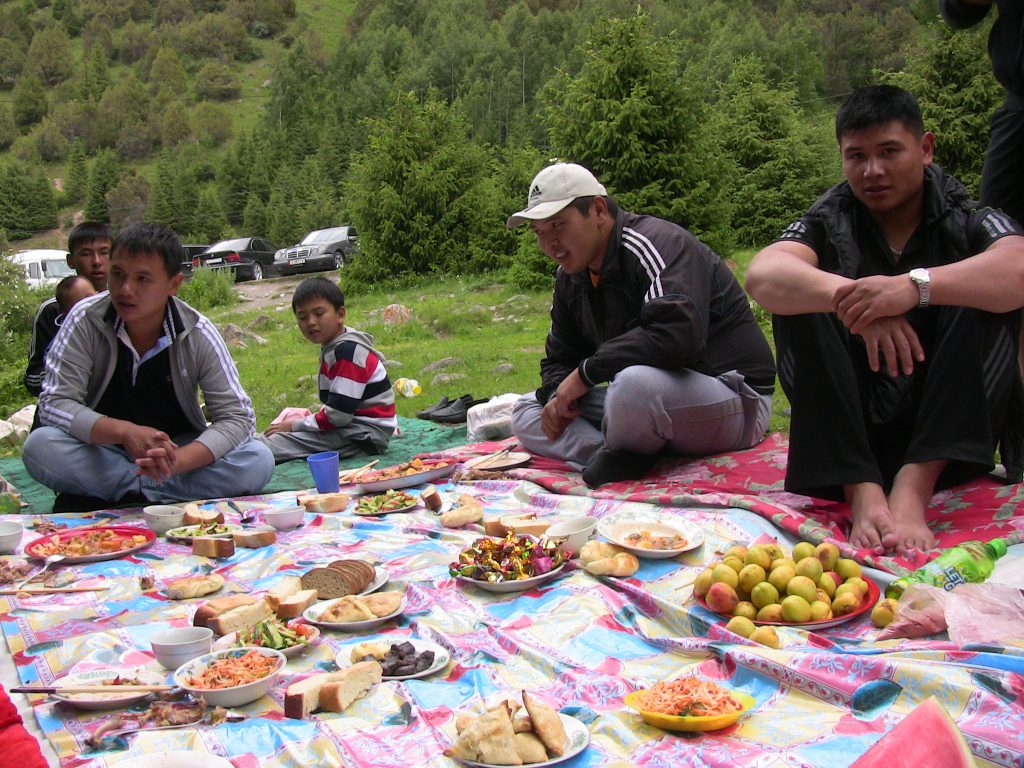
However, it is clear that as the wrapping of the last strophe becomes the flag, the person covered becomes the unborn creation. In this indefinite snowstorm we may also guess that the outside world of man is parallel to his inner world and that if they can’t tie they flag to the tent without the upper window, the of this is the fact that the dwelling is a widow tent. The mastery of the poet is apparent: he makes his audience ponder on the two words “widow” and “window”.
Another question in the same vein: if one event takes place will another follow it? It seems that the snow has been forgotten. Maybe the flag of the falling horse sense this. More questions are raised: does the horse fall under that same flag that wasn’t fixed on the tent or under the flag of a battle? And did the coward not run to or from the horse and the flag? And why? ….
In any case, that “somebody” who wrapped earlier, who was unborn then, now becomes the coward and the poet transports us from the field of nature to the field of human relations.
This strophe is like a culmination and consists of five lines. The tense is more complicated and the syntax is inversed. That “someone” of the earlier strophe becomes more and more incarnate. And the focus continues to jump: from the snow to the snowstorm, from the snowstorm to someone in a wide wrapper, then to the flag, to the fallen horse, to the coward who didn’t run and finally to the man who renounces his tribe.
If we compare this strophe to the first, we see that it appears to belong to another poem. Where is the snow and the person? However, the structure of this strophe is the same as that of the others and this parallelism is more important than the simple answers to the monotypic questions. For instance, the parallel contrasts between the mountain and the water, high mountain and low valley, splashed water and sounded melody play the same role as their analogues above.
- Before commenting on the last strophe, I would like to present an image of the “jir” and the Kazakh “jirau”s like, for example, Almas Almatov. The art of “jir” is like fox-hunting on the steppe. It is necessary to pursue the fox in one direction and then, suddenly to change direction. This is called “qaytaris” (turning). After several turns the hunters on horseback suddenly appear in front of the fox and pursue it in the opposite direction. This is the “Uluu Qaytaris” – the Great Turning. At this point the fox immediately falls to the ground as if dead and the hunters take it with their bare hands. The fox, accustomed to the seemingly infinite expanses of the steppe now finds itself in an enclosed space and loses its head.
The philosophy behind “jir” is the same. The poet uses the strophes as if on a horse, the focus jumping from the snow to the tent, then to the flag and the man. The reader’s mind is confused after such “qaytaris” and after the “uluu qaytari” the reader loses his or her head and is caught in the poet-hunter’s hands. The importance of the last strophe in the Kazakh “jir” is as high as a mountain or a falcon flying. Here all dispersed thoughts have to find their solution.
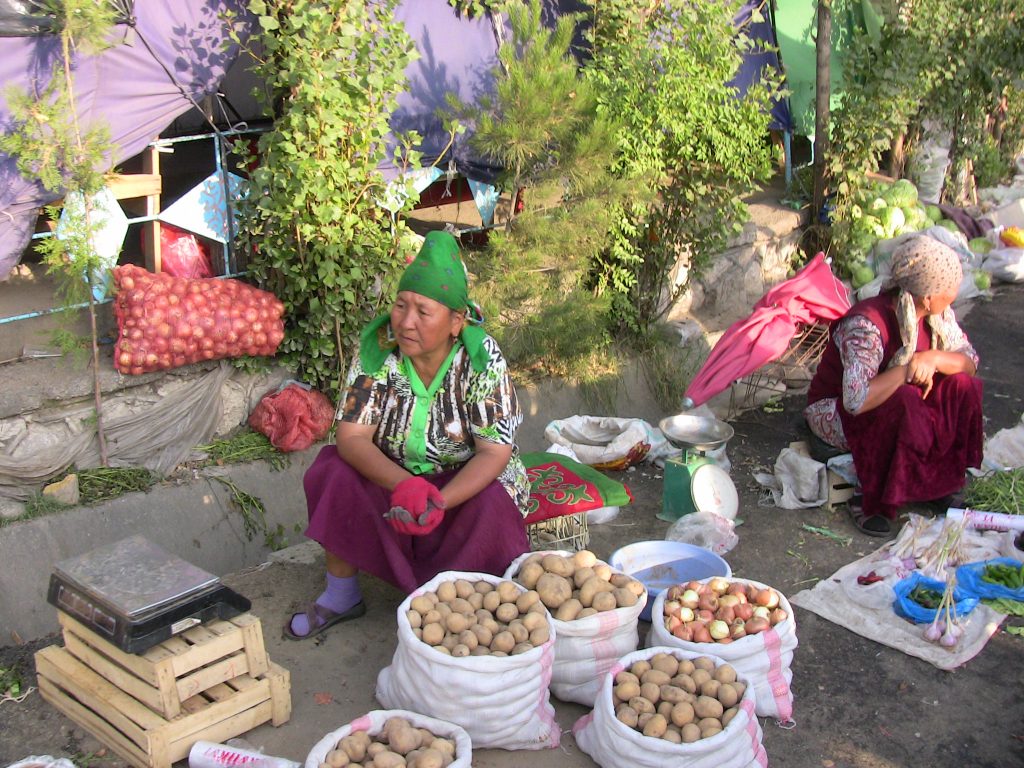
In terms of form this strophe has the same structure as those preceding it, except that it contains the first comparison in this poem, the feathers compared to “bones lost in a field”, breaking the structure of the question. The word for “bone” has a double meaning – both “a bone” and “a relative”. On the one hand, this bone is compared with the feather of the falcon and vulture, and through this, with the first snow. On the other hand, the bone is a relative lost in the field, like the coward who denied his tribe. On the one hand, the crow, “qarqa”, alliterates with the snow, “qar”, but they are opposites by the nature of their colours (black and white). On the other hand, the crow is from the same species of bird as the falcon and the vulture, but they are opposites in their ethical images and characters. Will the crow come to the feather of the falcon and vulture, which is like a bone lost in the field, or won’t it?
Internally, this strophe has no more meaning than those above; it is the realisation that the imagery conveys the senses of highness, of lowness and of cowardice that fulfils the true meaning of the poem. The poet addresses the reader saying: “O coward, traitor, lowly man, although you are equal to the feather of the falcon and vulture (symbols of highness and purity) a crow (the symbol of lowness) will come to you like a relative.”
4.
Let us compare the two poems by their structural elements.
a) The Lexicon
Poem 1: Nearly half the words are nouns, a third of them abstract nouns. The other half consist of fifty five verbs and adjectives. The verbs are mainly Turkic, the adjectives Arabic. Almost one-third of all the vocabulary is Persian-Arabic.
Poem 2: There are almost no adjectives. the proportion of nouns and verbs is fifty-fifty. There are a couple of Arabic words. The main artistic technique is alliteration.
b) The Syntax
Poem 1: All types of tense occur in a rich arrangement of syntax using, for example, inversion.
Poem 2: The structure of the syntax is monotypical, posing the question ‘If something has happened will another thing occur?’ However, there is some change in this question; the poem, which begins in the conditional tense, becomes more and more affirmative.
c) The Figures
Poem 1: Navoi uses many rhetorical figures (“tajnis”, “ishtikok”, “kalb” etc.) but the main figures are the “istioru” and “tashbih” (or metaphor), when one thing is described in terms of another, creating ambiguities such as the Beloved as a woman and the Beloved as God.
Poem 2: Not many figures are used. Expression is direct. The main artistic techniques are alliteration and association between the monotypical parallel strophes.
d) The Topos
Poem 1: Actions begin as vertical movement from high to low, but after a horizontal metamorphosis on the earth they finish in a vertical action from low to high. In other worlds, the action descends from the sky, develops as an event on earth then returns to the sky.
Poem 2: At first sight the topos of the “jir” begins vertically, too, but it immediately takes on the horizontal direction (“oray-boray”). In the following strophes the horizontal sense is always stronger than the vertical one, even in the final strophe when a falcon drops its feather but the focus is the horizontal movement of the crow, whether it will or will not (“jolar”!!) approach a lost bone ….
e) The Meaning
Poem 1: What is the subject of this ghazal? As we have said, although it appears to be a descriptive poem about winter, its main sense is issueless separation, winter between the Lover and the Beloved, between man and God, between earth and heaven.
Poem 2: As in the case of the ghazal, this “jir” is not only about a snowstorm, but a definition of black and white in the matters of mankind. The sky is a measure of the highness or lowness of humanity.
5.
On the basis of these notes, we can now reach some conclusions about the genres. First let us pose a question: What is the difference between the two modes of thinking? As we have seen, the two poems show isomorphic traits in different ways, which are seen at every level.
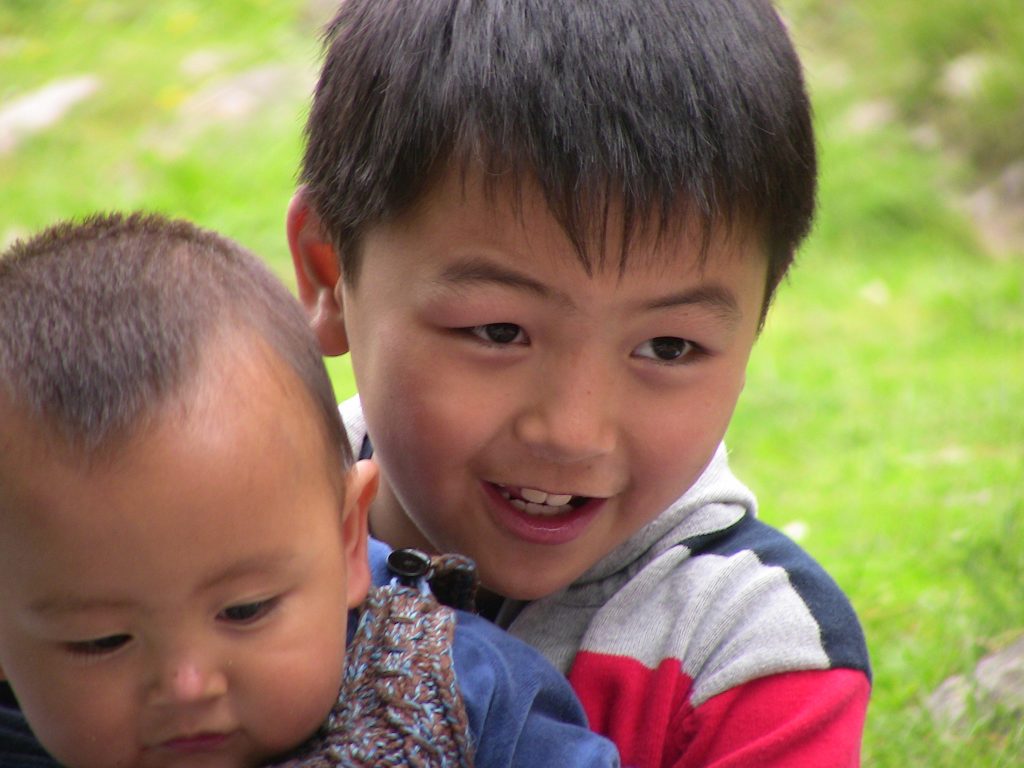
If we concentrate the essence of each poem into one symbol, we can express one as the symbol of “The Station” or “Stopping Place” (Maqam) and the other as the symbol of “The Way” (Jol). A basic aspect of the ghazal structure is the return of expressions to the “station” of the Radif (a repeated word or phrase); in the ghazal by Navoi discussed here, this is “qish” (winter). Meanwhile the monotypic strophes of Makhambet continue along a path, the end of which has forgotten its beginning. This difference is like the difference between affirmation and interrogation. Navoi’s affirmative sentences are tied to the past or the present, Makhambet’s interrogations are a provocation. The nature of the question is provocational: from the point of future definity one asks about present indefinity, so one is moving towards the future.
The case is the same on the lexical level. A noun is a name, a definition, deprived of action. Sop half of Navoi’s words are nouns. The verbs, actions, compose one-fifth of the words. At first Navoi uses verbs in the active voice but as the poem progresses they lose their activity, becoming existential (-emish, -edi). On the contrary the number of verbs and nouns is equal in Makhambet’s poem. Each subject has its action. These actions are mostly of movement; they are the actions of the road.
The mode of use of the words in each poem is contrary, too. In Navoi all words serve the single word “qish”, giving it nuances, but with Makhambet each word gives birth to another word: qar – qalin – qaptay – qarindas – qam – qatin etc. … Every new word renovates the receding one and continues its direction.
Thus at every level and aspect there is the same contradiction. The thought of Navoi is increasingly concentrated around one point, as in “zikr” (meditation), whereas the thought of Makhambet, like the vision of a horseman, aspires further and further. One of the poet’s is tied to his station by love, the other is freed and thrown onto his road.
What is the cause of this contradiction, this difference between two Turkic poetic minds? The easiest answer is based on the different modes of life: settled and nomadic. Navoi represents the culture of settlement, while Makhambet is for the most part a nomadic poet.
You might ask which of the two poems is near to the ancient, so-called ‘natural’ Turkic poetry – the ghazal of the 15th century or the “jir” of the 19th century? It is, of course, the “jir”. The ghazal transcends the settled-nomadic opposition, its subject is personal, the sufferings of the poet in his relations with the single Beloved. This poem is certainly an Islamic, Sufic poem. The fact that all its adjectives, in other words its descriptions of this world, are Arabic, is sufficient to indicate this.
However, the “jir” remains the Turkic expression. It is interesting to note that during all my research I haven’t found a single Kazakh “jir” by Makhambet or his contemporaries on the subject of love. It may be that the absence of the feminine gender in the Turkic languages is at the root of this, coupled with the nomadic way of life. The topics of the “jir” are the problems of generation, tribe, family, relativity etc … The field of “jir” always opens on to a road. Here there is no distracting substitution of the night by musk or a face by snow. Its definitions are direct and clear. Here is the earth, there is the sky, between them is the way. Your feet are on the earth, your body is in the air and your thoughts are on the way.
The main features of the way are its beginning and its end. When one examines the Kazakh “jir” one notices that the tension between the first and the last strophe is very strong, but the space between may be filled by anything, often by variations on proverbs. In reality on the way one may meet everything but the choice of the beginning and the end is one’s own obligation, the quality of that choice affecting one’s life. So says the “jir”.
The ghazal also depicts a way, but a way that is hidden not evident, spiritual not physical. The spiritual way is not evaluated in spatial terms, but temporal terms. As the Uzbek Turks say, “A tree grows in one place”. And if on the Kazakh steppe the earth is directly allied with the sky, in the Uzbek garden there is a tree with its shadow. Doesn’t this metaphor function in the same way, the tree transposing the earth absorbed by its roots with the light from the sky into first leaves, then flowers, the fruit the finally a seed which falls into the earth again?
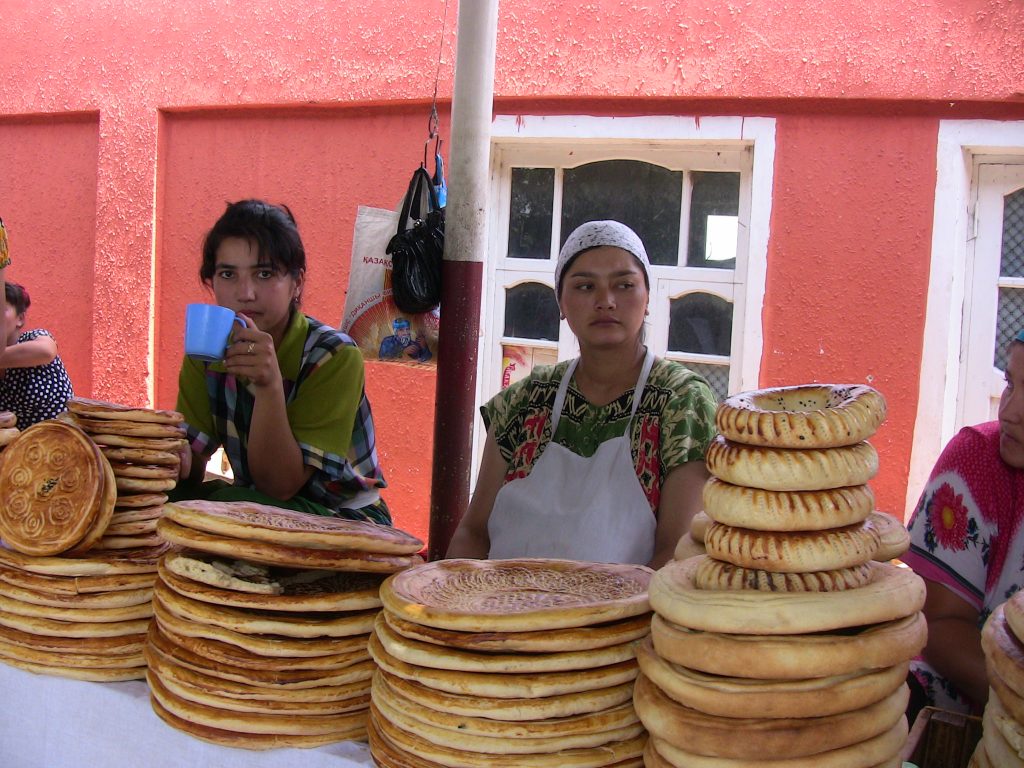
The measure of the way isn’t the distance between its beginning and end but its return home. In Uzbek fairy tales there are three types of road: one from which there is return, one from which one may return and the third, the worst, the way of no return. Ghazal measures its every step by the return home, to its station, its Radif. Say the word and return! Say two words and return twice as fast. Otherwise the separation will be as great as the royalty of Jam, as the universe.
In Islam man lives with a dream of returning to his Purest Beloved and the ghazal is the shadow of this dream, fallen onto the page.
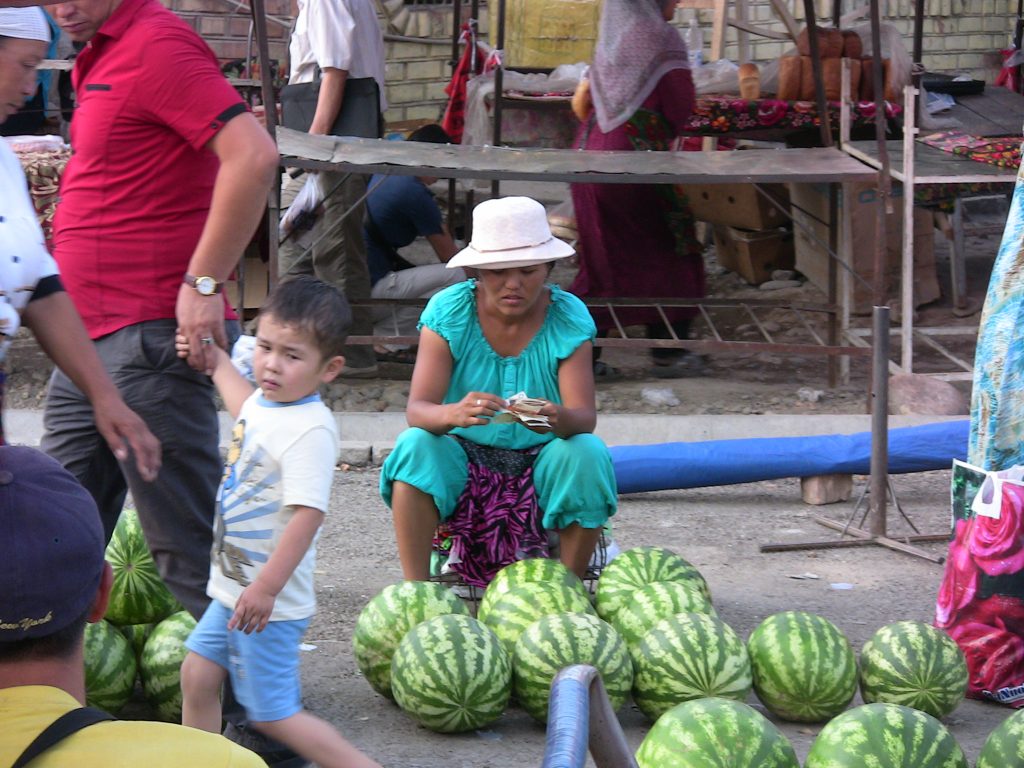
The Station and The Way, The Way and The Station. There is no say without stations and vice versa. So the poetry of the Kazakh and Uzbek Turks, like the thought concentrated in our minds and the blood aspiring in our hearts, unites our existence.
